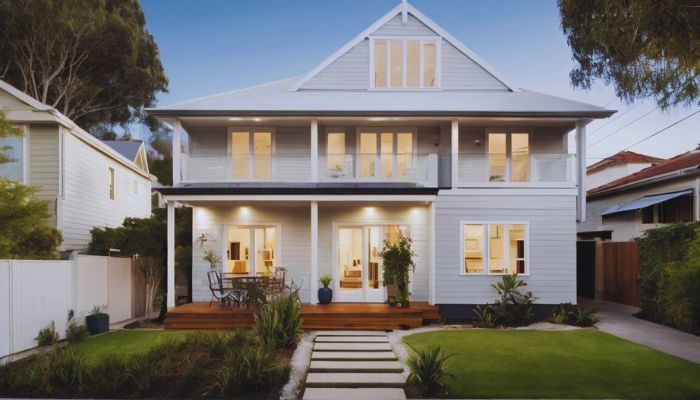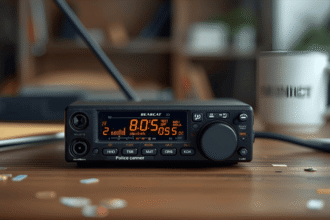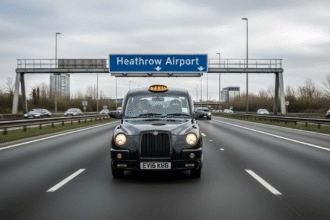The exterior of your home plays a vital role in both appearance and performance. It’s not just about first impressions it’s about protection, energy efficiency, and long-term value. When choosing cladding, two options often come up for comparison: vinyl weatherboard and traditional cladding materials like timber, brick, or fibre cement. Each has its own set of characteristics, and the decision can have a lasting impact on how your home looks, feels, and functions for years to come.
Vinyl weatherboard has become a popular choice in modern home design thanks to its low maintenance needs, versatility, and affordability. It offers a sleek, uniform finish that can be tailored to a variety of styles, from coastal homes to contemporary builds. On the other hand, traditional cladding is known for its timeless appeal and solid performance, with materials that have stood the test of time in Australian architecture.
Choosing between the two isn’t always straightforward. It involves weighing your design preferences, your local climate, your maintenance expectations, and your long-term investment goals. In this article, we’ll take a closer look at how vinyl weatherboard compares to traditional cladding in key areas like aesthetics, durability, maintenance, and cost so you can make an informed decision that suits your home and lifestyle.
Understanding the Basics: Vinyl Weatherboard and Traditional Cladding
Before diving into comparisons, it’s important to understand what sets these two cladding types apart. Vinyl weatherboard is made from durable polyvinyl chloride (PVC), designed to imitate the appearance of traditional timber weatherboards without the same upkeep. It’s lightweight, resistant to moisture and pests, and is often chosen for its affordability and ease of maintenance.
Traditional cladding, on the other hand, encompasses a range of natural and engineered materials. Timber is the most iconic, offering natural warmth and character, but it requires ongoing care to preserve its condition. Brick is another common option, known for its solid, long-lasting structure and ability to regulate indoor temperatures. Fibre cement boards are also frequently used, offering a balance between resilience and design flexibility.
Each of these materials brings different strengths to the table. Vinyl weatherboard is often preferred for its practicality and clean look, while traditional cladding is chosen for its craftsmanship and the character it adds to a home. Understanding these foundational differences is the first step in determining which option best meets your needs.
Visual Appeal and Aesthetic Versatility
How your home looks from the outside matters not just for street appeal, but also for how it reflects your personal style. Vinyl weatherboard offers a clean, modern look that works well across many home styles. Whether you’re after something coastal, contemporary, or somewhere in between, vinyl comes in a wide range of colours and finishes, including textured options that mimic real timber grain. It gives you the flexibility to get the look you want without the upkeep.
Traditional cladding, like timber or brick, brings a different kind of beauty. Timber, for example, has a warm, natural charm that’s hard to replicate. It adds character and works beautifully with older homes or designs that lean into a more classic aesthetic. Brick, on the other hand, offers a solid, timeless appearance that’s often associated with quality and durability.
In the end, it comes down to what kind of feel you want your home to have. Vinyl offers consistency and modern appeal, while traditional cladding brings texture, richness, and a sense of tradition. Both can look stunning you just need to choose what fits your vision best.
Durability and Resistance to Weather Conditions
No matter where you live, your home’s exterior has to stand up to the elements sun, rain, wind, and everything in between. That’s where durability really counts. Vinyl weatherboard is built to handle tough conditions. It doesn’t rot, rust, or attract termites, and it’s designed to resist moisture and UV damage. For many homeowners, that kind of low-fuss reliability is a big selling point.
Traditional cladding, depending on the material, can be just as strong but it often needs more attention over time. Timber is naturally durable but vulnerable to weathering if it’s not properly sealed and maintained. It can warp or crack with exposure to moisture or heat. Brick is highly resilient and offers excellent thermal insulation, but it may require repointing or repairs after many years. Fibre cement sits somewhere in between strong and stable, with good resistance to moisture and pests.
If you’re in an area with harsh weather or you simply want peace of mind knowing your cladding can take a beating, vinyl offers consistent protection with minimal effort. Traditional materials can hold up just as well but usually need a bit more care to get there.
Maintenance and Long-Term Performance
One of the key things homeowners consider when choosing cladding is how much work it will take to keep it looking good. Vinyl weatherboard is often chosen for its low-maintenance nature. It doesn’t need to be painted, sealed, or treated just an occasional wash is usually enough to keep it clean and fresh-looking. That means less time spent on upkeep and more time enjoying your home.
Traditional cladding, especially timber, requires a bit more commitment. To keep it in top shape, regular painting or staining is usually necessary to protect it from moisture, sunlight, and insects. If left untreated, timber can fade, warp, or even develop rot over time. Brick and fibre cement are more durable in that sense, but they can still benefit from occasional inspections and minor repairs to ensure they stay weather-tight.
If you’re someone who prefers a set-and-forget approach, vinyl makes that easy. But if you don’t mind putting in a bit of effort or hiring someone to do it traditional cladding can reward you with rich character and a lasting, timeless appearance.
Cost Comparison and Value Over Time
Budget is always an important factor when deciding on cladding, but it’s not just about the upfront cost it’s also about how much value you’ll get over time. Vinyl weatherboard is usually the more affordable option when it comes to initial installation. It’s also more cost-effective in the long run because it doesn’t require painting or frequent maintenance, which can help keep ongoing expenses low.
Traditional cladding materials can cost more to install, especially if you’re using high-quality timber or custom finishes. However, they often add to your home’s character and can boost its value in the eyes of potential buyers. Timber, for instance, brings natural warmth and authenticity that many people love, and brick has a reputation for long-term durability and energy efficiency.
When weighing your options, it’s worth considering both the short-term savings and the long-term benefits. Vinyl might be the smarter choice if you’re looking for lower maintenance and a tighter budget. But if you’re focused on creating lasting appeal and don’t mind the investment, traditional cladding may be well worth it.
Choosing the Right Fit for Your Home and Lifestyle
At the end of the day, there’s no one-size-fits-all answer choosing between vinyl weatherboard and traditional cladding comes down to what works best for your home, lifestyle, and personal preferences. If you’re after a practical, cost-effective solution that looks sharp and requires very little upkeep, vinyl is a strong contender. It’s great for busy households or investment properties where low maintenance is a priority.
On the other hand, if you’re drawn to natural materials, unique textures, or you’re renovating a home with character, traditional cladding might be a better match. Timber, brick, or fibre cement can add depth and authenticity that’s hard to beat especially if you’re willing to put in a bit more care over time.
Think about your climate, how much time you want to spend on maintenance, and the overall feel you want your home to have. Whether you go with the sleek convenience of vinyl or the timeless appeal of traditional cladding, the right choice is the one that aligns with your lifestyle and vision.
Conclusion
Choosing between vinyl weatherboard and traditional cladding isn’t always easy but it becomes clearer when you look at what matters most to you. Vinyl offers a clean, modern appearance with the bonus of being low maintenance and budget-friendly. It’s ideal for those who want a no-fuss exterior that still looks great year after year.
Traditional cladding, on the other hand, brings undeniable charm and character. Whether it’s the natural texture of timber or the timeless strength of brick, these materials can elevate the style and value of your home but they do require a little more care and investment over time.
Both options have their place in modern home design. By considering factors like appearance, durability, upkeep, and long-term value, you can make a confident decision that suits your home’s needs and reflects your personal style.

















